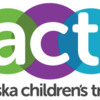The Alaska Children’s Trust (ACT) just released a data and image-packed 11-page brief “Vibrant Economy, Strong Workforce, Thriving Families: A Guide to Trauma-Informed Policy Decision-Making.” The document was developed as a tool to educate a broad range of state and local policymakers about the impact of ACEs on health and social problems. The primary audience is state legislators and their staffs, government administrators, and county and municipal policymakers. Advocates have already shared the brief by hand-delivering it to state legislative offices last month. 
The brief and other expanded material will be presented Laura Norton-Cruz, Alaska Resilience Initiative (ARI) director, to legislators and their staffs at a Lunch and Learn at the Capitol in Anchorage March 13. (This event will be televised live and archived at https://www.360north.org/watch). ARI is a program of the Alaska Children’s Trust that provides trauma-informed resources, tools, and training.
The brief focuses on the economic impact of ACEs—government spending and economic growth— and their impact on the current and future Alaskan workforce. It details the estimated annual costs linked with ACEs in 6 categories of health behavior or outcome (adult Medicaid, current smoker, non-gestational diabetes, binge drinking, arthritis, obesity) that total $865,881,810. These estimates are based on the work of Patrick Sidmore, author of the report Economic Cost of Adverse Childhood Experience in Alaska. The Alaska-specific data on the prevalence of ACEs is based on the Behavioral Risk Factor Surveillance System (BRFSS).
The report says that government has a role to play by embracing policies that prioritize the well-being of the workforce and their families, support caregivers, and assure children’s healthy development as additive to the work already being done by Alaskans across the state in all sectors. As an answer to the question “What can government learn from business?” the report features the “soft skills” training of employees of Vigor Alaska, a shipyard in Ketchikan. The case made for supporting trauma-informed policy and practice to strengthen the state’s economy and workforce, should resonate with policymakers as well as business leaders and their organizations (e.g., chambers of commerce).
The specific recommendations for policymakers include becoming a trauma-informed change leader by being trained on ACEs, require training for state agencies, and include trauma-informed language in legislation. The second recommendation is to use a trauma-informed lens for making policy decisions about legislation and budgets by asking how they affect the current workforce and the development of children, who are Alaska’s future workforce.
Another recent brief on the economic impact of ACEs in the state of Tennessee reported on by Jane Stevens in ACEs Connection found that ACEs among Tennessee adults led to an estimated $5.2 billion in direct medical costs and lost productivity from employees missing work. Dr. Courtnee Melton, a policy analyst at The Sycamore Institute that issued the report, said their work was informed by the Alaska analysis by Patrick Sidmore.


Comments (0)